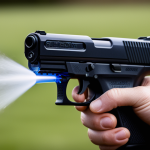Understanding Off-Ball Movement
Off-ball movement is a critical component of football strategies, enhancing team performance significantly. It refers to how players position themselves and move when they don’t have the ball. This concept requires careful attention, as it influences overall game dynamics.
One common misconception is that players are only effective when in possession of the ball. However, their movement without it is equally vital. Efficient off-ball movement can disrupt defensive setups, opening up gaps and creating valuable scoring chances. It aids in maintaining fluid ball circulation and ensures that attacks aren’t predictable, thus increasing the likelihood of successful offensive plays.
Also to read : Essential Techniques to Protect Young Football Athletes from Frequent Injuries
Another key aspect is understanding player positioning. Strategic positioning off the ball helps in utilising space on the pitch effectively, supporting teammates, and drawing defenders away. This movement often requires excellent spatial awareness to anticipate where the ball is likely to be delivered and to get into place before it arrives. By learning to master off-ball movement, players maximize their contribution to the team and enhance overall gameplay.
Fundamental Techniques for Off-Ball Movement
Off-ball movement relies on several fundamental techniques to be effective. Spatial awareness is arguably the most crucial aspect, enabling players to predict play developments and position themselves strategically. A keen understanding of space allows for proactive tactics rather than reactive ones, ensuring a seamless integration into the team’s overall football strategies.
Also read : Game-Changing Turf Innovations Transform Football Training: Essential Insights Uncovered
Body positioning is another vital component. Effective body orientation helps players create separation from defenders and shield the ball when needed. Players should continuously look for optimal angles that allow immediate transitions into attacks or defensive posturing.
Maintaining spacing and width ensures that energy is conserved for crucial plays. By spreading out, teams prevent opponents from stifling attack progression. It supports sustainable ball distribution and dynamic position swapping, keeping defenders on their toes.
The ability to create separation is often subtle but pivotal in off-ball movement techniques. Quick changes in direction or pace can disorient defenders, opening up lanes for receive-and-play. Simple feints and body sways executed precisely can significantly impact a player’s ability to remain elusive, thus enhancing their contribution to successful team strategies.
Drills to Enhance Off-Ball Movement Skills
Individual Drills
Training drills are pivotal in honing off-ball movement skills. Solo practice routines such as cone drills and agility ladders focus on refining quick directional changes. These exercises cultivate rapid footwork and enhance the ability to employ effective player positioning. Moreover, using resistance bands can amplify core stability and lower-body strength, vital for sudden bursts of speed. It’s crucial to engage in self-assessment to identify weaknesses in agility or spatial perception. By recording progress and setting targeted goals, players can systematically improve their skill development.
Partner Drills
Partner drills emphasize teamwork and sharpen communication skills. One exercise is the mirror drill, where players face each other, mimicking spontaneous movements. This trains them to anticipate actions and react swiftly. Another popular drill involves passing sequences that require adaptive positioning to receive passes dynamically. Through collaboration, players enhance their spatial awareness and responsiveness, boosting their contribution to collective football strategies.
Game Simulation Drills
Incorporating off-ball movement into practices like scrimmages is essential. Game-like situations allow players to test strategies and refine defensive reads. Evaluating performance through video analysis offers insights into tactical errors and highlights successful movement techniques.
Analyzing Professional Players’ Off-Ball Movement
Analyzing professional players offers valuable insights into off-ball movement mastery. Renowned players, like Lionel Messi and Thomas Muller, exhibit exceptional skills in anticipation and positioning. Messi uses his spatial awareness to exploit defensive gaps, finding opportunities where few others see them. Muller, dubbed the “Raumdeuter” or “space interpreter,” effectively reads the game, positioning himself proactively to receive passes.
Examining video footages of professional matches reveals how these players employ subtle movement techniques to create scoring opportunities. They often use sharp directional changes, feints, and acceleration to disorient defenders, opening up crucial spaces. Studying these actions provides aspiring players with a blueprint for improving their off-ball tactics.
Lessons learned from these analyses emphasize the importance of strategic positioning over pure speed or strength. Mastering these techniques can significantly enhance performance, especially when combined with a keen understanding of the game. Implementing these strategies requires dedication to practice routines and a willingness to adapt and learn from professionals through video examples and analyses. Watching professionals in action helps players appreciate the nuances of effective off-ball movement.
Incorporating Off-Ball Movement into Game Strategies
Incorporating off-ball movement into game tactics is pivotal in enhancing a team’s offensive capabilities. Effective team strategy involves integrating dynamic movement patterns that disrupt opponent formations. This requires a holistic approach, where players learn to read defenders and adjust movements accordingly.
Strategically, it’s vital to include off-ball dynamics in offensive plays. Players should position themselves to anticipate passes, exploit spaces, and adjust based on defensive shifts. This proactive engagement maximises scoring opportunities, as defenders are drawn away from crucial zones.
Consistent practice and repetition of these manoeuvres within training sessions are essential for team cohesion. Practising under simulated game conditions encourages players to entrench off-ball principles into their natural play, making them intuitive and fluid during actual matches.
Reading defenders requires acute observational skills. Understanding their reactions and adjusting movements aptly can create essential opportunities. Teams should focus on developing strategies to enhance such adaptability. Teachers play a crucial role here, guiding through targeted drills and instructional methods to fine-tune this aspect of play.
Commitment to these practices moulds more responsive, tactically aware teams, ensuring optimal utilisation of off-ball movement for greater strategic success.
The Role of Coaches in Developing Off-Ball Movement
Coaches play a crucial role in nurturing off-ball movement skills among players through effective coaching techniques. By prioritizing player development, coaches can guide individuals to understand the importance of movement without possession. They provide instructional strategies that break down complex skills—such as player positioning—into manageable steps, allowing players to build confidence in their abilities.
Creating a supportive environment is integral to encouraging growth. Coaches should foster trust and open communication, allowing players to ask questions and learn actively. Players benefit from constructive feedback and drills tailored to their specific needs, reinforcing learning and adaptation.
Monitoring progress in off-ball movement skills requires regular evaluations. Coaches can employ video analyses to highlight strengths and areas for improvement, ensuring feedback is precise and insightful. Emphasizing the application of learned techniques in game scenarios helps players incorporate them naturally.
By equipping players with a comprehensive understanding of off-ball strategies and supporting their skill development, coaches ensure their teams are more tactically versatile, ultimately enhancing overall football strategies. Through this dedicated focus on coaching techniques, both individual and team performance can reach optimal levels.


